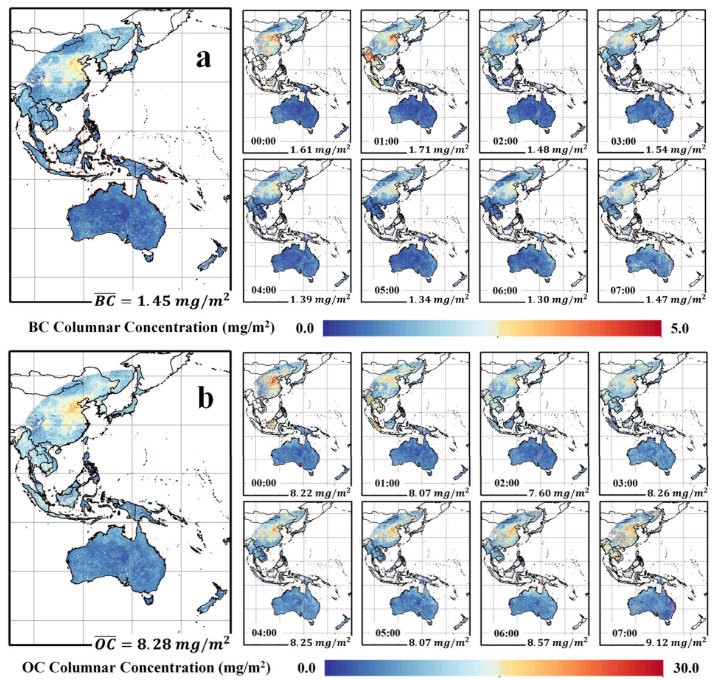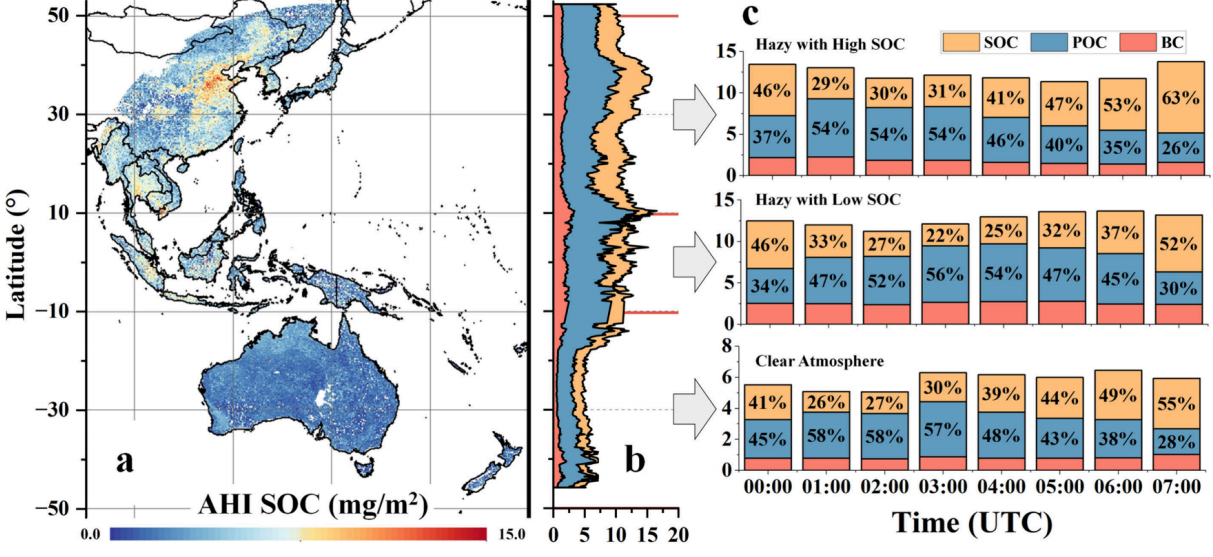Carbonaceous aerosols, such as Black Carbon (BC) and Organic Carbon (OC), are key components of fine particulate matter (PM₂.₅). They not only pose a serious threat to regional air quality and public health, but also exhibit a distinct climate effect due to their light-absorbing properties.
Unlike most scattering aerosols that generally cool the climate, these absorbing aerosols act like “greenhouse particles,” warming the atmosphere by absorbing solar radiation and thereby exacerbating global climate change. However, conventional ground-based observations are insufficient to capture their spatiotemporal dynamics over large areas, and existing satellite remote sensing techniques have long faced challenges in quantitatively retrieving carbonaceous aerosol components.

A research team led by Associate Professor Ying Li from the Department of Ocean Science and Engineering at the Southern University of Science and Technology (SUSTech) has recently achieved a novel breakthrough in carbonaceous aerosol remote sensing. For the first time, they realized large-scale, hourly, high-resolution dynamic monitoring of carbonaceous aerosol concentrations, providing essential technical and data support for studying their transport, source apportionment, and formation mechanisms.
Their study, entitled “Advancing Carbonaceous Aerosol Remote Sensing Across Asia–Oceania: Insights from Geostationary Satellite Retrievals,” has been published in Environmental Science & Technology, a top journal in the field of environmental and earth sciences, and was featured as the supplementary journal cover for this issue.
Leveraging high-frequency observations from the Himawari-8 geostationary meteorological satellite, which covers the Asia-Oceania region, the team innovatively developed a new algorithm based on the critical reflectance technique. This method successfully enables hourly, high-resolution dynamic monitoring of carbonaceous aerosol concentrations over large regions. Unlike polar-orbiting satellites, which typically pass over a specific area only once or twice per day, geostationary satellites can continuously “stare” at the same region, tracking the transport and evolution of carbonaceous aerosols from day to night with high temporal resolution.

Figure 1. Spatial distribution of retrieved (a) BC and (b) OC at hourly intervals averaged over 2018
This study represents the first quantitative, hourly retrieval of carbonaceous aerosols at the Asia-Oceania scale, clearly revealing their diurnal variation and rapid response to human activities such as morning traffic emissions. Based on high-resolution satellite data and the innovative algorithm, the research not only achieves accurate quantitative retrieval of BC and OC, but also realizes—for the first time via satellite remote sensing—an effective assessment of Secondary Organic Carbon (SOC). This allows for more precise identification of contributions from different emission sources, such as urban clusters and wildfires, and for tracking cross-border transport pathways of pollutants.
The work addresses monitoring gaps in regions with sparse ground stations and overcomes long-standing bottlenecks in accurately retrieving carbonaceous aerosol components via traditional remote sensing. It provides a continuous, high-precision dataset for regional atmospheric environment assessment and offers crucial technical and data support for accurately tracking pollutant sources, scientifically evaluating the effectiveness of regional pollution control measures, and more reliably assessing the climate effects of aerosols.

Figure 2. (a) Retrieved Secondary Organic Aerosol (SOC) in 2018; (b) Latitudinal variation of carbonaceous aerosol concentrations (BC, POC, and SOC) in 2018; (c) Diurnal variation of the fractional contribution of BC, POC, and SOC to total carbon mass across high-, mid-, and low-SOC latitude zones
Dr. Fangwen Bao from Ying Li’s team is the first author of the paper. Associate Professor Ying Li is the corresponding author, and SUSTech is the primary affiliated institution.
Paper link: https://doi.org/10.1021/acs.est.5c01120
To read all stories about SUSTech science, subscribe to the monthly SUSTech Newsletter.
Proofread ByAdrian Cremin, Yuwen ZENG
Photo ByDepartment of Ocean Science and Engineering